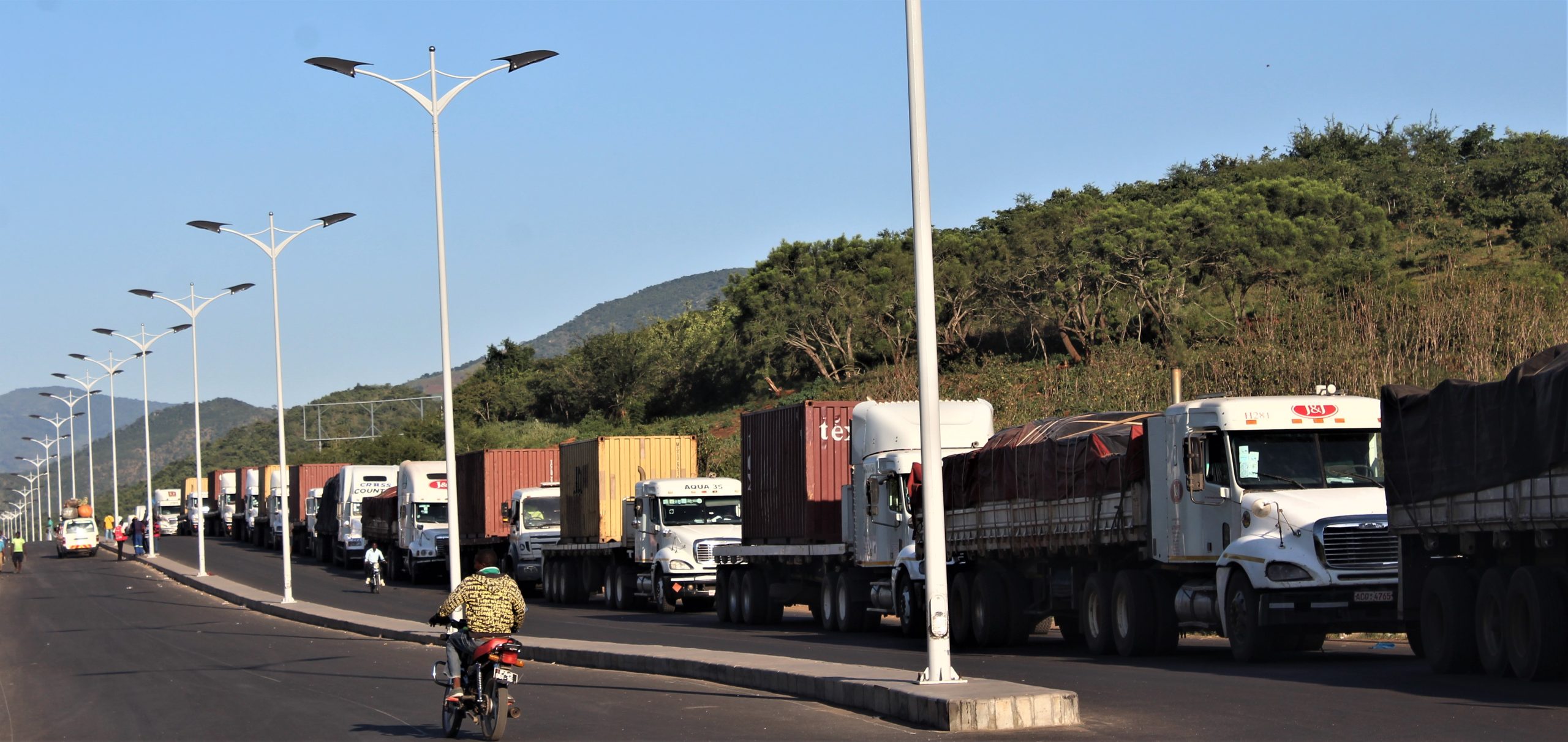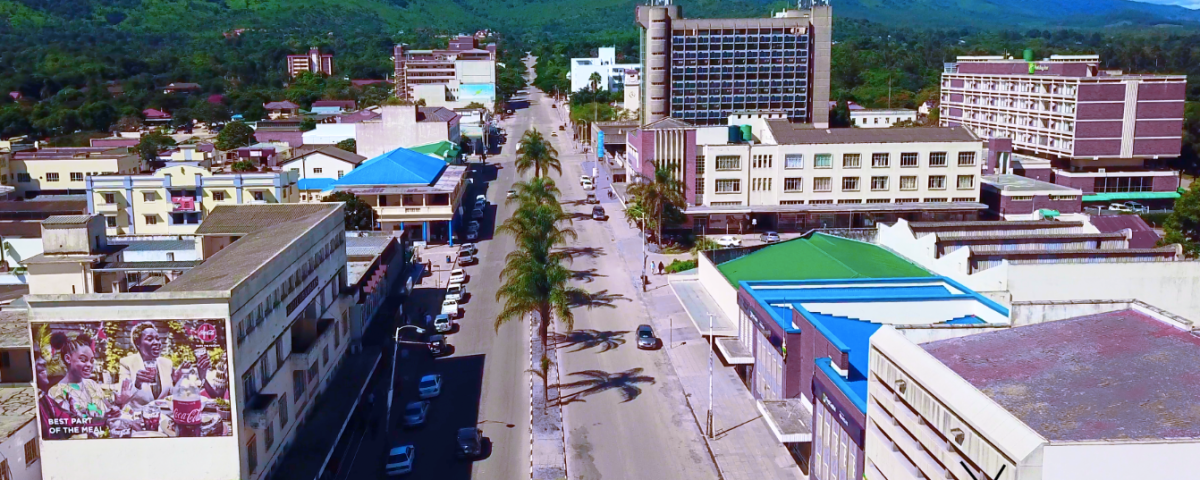
Mutare shoots down Constitutional Amendment Bill, calls for more urgency on alignment of laws
June 18, 2020
International haulage trucks road levy expected to be operational in July: City of Mutare
June 26, 2020City of Mutare beautification programme eyes to return sparkle to the eastern jewel

The eastern jewel which had lost is sparkle is now being given a facelift. (Picture by Joseph Sanhanga Junior)
Ngoni Dapira
ONCE renowned as the jewel of the east in the 1990s, mostly because of its splendor and cleanliness, Mutare had over the years lost its sparkle, but the local authority has embarked on a beautification programme to restore its former glory, Easterntimeszim has learnt.
The city which is surrounded by mountains and breathtaking mountain range views was coined the Switzerland of Africa because of its similarity to Switzerland in terms of landscape features. However, over the years due to a myriad of challenges ranging from maladministration at the helm of the local authority to uncontrollable macro-economic and political factors faced by the country in the past two decades, Mutare had lost its grandeur. Bulawayo is now widely perceived as the cleanest city in the country, but this will be a thing of the past says City of Mutare public relations officer Spren Mutiwi.

An archive picture of Mutare before independence. The Customs House area along Herbert Chitepo (Main Street) downtwn is now congested and heavily littered unlike back then.
Situated about 300km from the port of Beira in Mozambique, Mutare is also the closest and quickest gateway to the sea, which makes it a strategic tourism resort city and a dry port hub within Southern Africa for most land locked countries in the region. From a backdrop where most road networks are in a deplorable state with no meaningful infrastructure development projects realized to give a facelift to the city in the past two decades, the ambitious beautification programme by the local authority has been viewed as long overdue by most citizens.
The first project to be embarked on which has since been completed was the resealing of the First Street road, covering a distance of 1.1km. The project cost was $2.5 million (RTGS) and the local authority engaged Fossils Contractors to do the job whilst it (Mutare City Council) played a supervisory role.
“Whilst periodic road maintenance is still in progress, the local authority continues to roll out routine maintenance programmes, engaging in pothole patching. Soon we shall be extending our periodic road rehabilitation to Aerodrome Road…The biggest challenges is that almost the entire road network in the city has outlived its lifespan and requires resealing,” said Mutiwi in a press statement.

The resurfaced road on First Street in Mutare.
He said the local authority requires more than $30 million to upgrade the 500 km stretch of the road networks within the city to attain the smart city status. Mutiwi however said to achieve this ambitious project, the Zimbabwe National Roads Administration (ZINARA) must timely disburse the national roads administration funds to local authorities, which has not been the case over the years. He also appealed to the residents to remain dedicated in paying their monthly obligations to the municipality as this is the only way which will guarantee improved and better service delivery in general.
Last year during the Urban Councils’ Association of Zimbabwe (UCAZ) 78th annual conference in Bulawayo councilors from urban local authorities reportedly slammed ZINARA for alleged corruption and failure to disburse road maintenance funds on time among other issues.
After completing the First Street project, last week the beautification programme stepped up and started re-spraying of road markings along Herbert Chitepo Street (Main Street), relawning and fencing at Meikles Park. Regardless of being at the heart of the city, Meikles Park was now an eyesore and more of a deserted place for street kids to shack up. A fenced garden area is being spruced up with a stone work water fountain put up. Mutiwi said they intend to make the park the pride and signature landmark of the city.

The stone work water fountain built at Meikles Park and garden area being relawned.
They have also put up concrete block median strips along Herbert Chitepo which will be bedecked with flower beds inside. Median strips are often designed to minimize vehicle damage and crossovers to avoid head on collision on dual carriage way roads.

Council workers putting final touches to the concrete block median strips.
The icing on the cake to the beautification programme is the installation of the first-ever solar traffic lights in the city. Two intersections which had become black spots have been identified for the project. One of the set of new solar traffic lights will be installed at the intersection on corner Fourth Avenue and Robert Mugabe at Sanhanga Complex and the other set of traffic lights at corner Second Street and Aerodrome Road intersection at NMB bank.
Mutiwi said the contractor has already completed civil works and structural works and is currently working on mounting the traffic lights accessories. Adding that the cost of the tender project is $700 000 and US$34 000, which included fixing and supply of all the materials.

The first ever solar traffic lights in Mutare being mounted.
“In the next two weeks, the contractor is expected to finish and ensure that the traffic lights are operational. Council is also focusing on lighting up the city through installation of solar street lights to drive the night tourism agenda. The project also includes the installation of a new tower light in Chikanga Extension and work is currently underway to improve public safety in the neighborhood. So focus is now on scaling up the public lighting system and improve public safety of our residents and stakeholders…Slowly but surely, we shall get there. United together we shall make our city of Mutare great once again,” said Mutiwi in a statement.
The resource rich province of Manicaland was at some point earmarked to become one of the regions to first robustly develop, turning its capital city of Mutare into a world class city, especially after the discovery of diamond in Chiadzwa village in 2006. Proposals were even made to turn Mutare into a diamond city, which would be a smart city concept. A smart city is a municipality that uses information and communication technologies (ICT) to increase operational efficiency, share information with the public and improve both the quality of government services and citizen welfare.

Road markings being resprayed along Herbert Chitepo Street in Mutare.
The main features of a smart city are adequate water supply, assured electricity supply, sanitation, including solid waste management, efficient urban mobility and public transport, affordable housing, especially for the poor, robust IT connectivity and digitalization as well as good governance, especially e-Governance and citizen participation. In other words this would be the archetype model of a futuristic and developed city.
This however never sprung as it is now 13 years since the discovery of diamonds with little to show for it as a city. Mutare citizens through various lobby groups such as the Zimbabwe National Chamber of Commerce (ZNCC), Confederation of Zimbabwe Industries (CZI) and Hospitality Association of Zimbabwe (HAZ) all lobbied to see the province meaningfully benefit from its diamonds. They lobbied to see infrastructure development of world class hotels to boost tourism, modern road infrastructure networks and an airport to ensure direct air connectivity, not leaving out downstream value addition industry such as diamond polishing and cutting factories. This remains a pipe-dream, regardless off many research papers and proposals submitted to Government since 2009.
However, present-day, the City of Mutare hopes to turnaround things through its Fern Hill Gemology centre project expected to start soon. The country’s diamond sector has been very controversial with reports of rampant looting of diamonds through illegal diamond panning and smuggling syndicates that operate through senior government officials and powerful politicians. The government was however pressured by community based organisations (CBOs) from Chiadzwa and natural resources lobby groups to construct the centre near Chiadzwa,. This was after initial efforts had been made to have the centre in Harare.
The Gemology centre investment is expected to bring quick wins for the city, especially under the envisaged devolution programme. The Centre is expected to feed into the diamond cutting and polishing value chain and will be subdivided into four sections namely the School of Gemology, which will offer training courses across the value chain, Diamond Manufacturing and Lapidary, which will house cutting and polishing companies, jewelers, manufacturing for blacksmith and manufacturers as well as ancillary services that will house all supporting businesses as a dry port city.
City of Mutare town clerk Joshua Maligwa during a press conference held early this month said the local authority has been struggling from legacy issues which they hope to come out of through constructive engagement with citizens. He said pushing developmental projects would be the new thrust to win back the hearts of the people to believe in their capability to ensure service delivery and restore the jewel of the east status to Mutare. Maligwa joined the local authority in 2017 coming from Rusape town council.
“We are moving ladies and gentleman and its either you are with us or against us to turn this city into the jewel of the east it used to be. By December we will have tangible results. Come December there will be water in Dangamvura. People should appreciate that most of these projects we are undertaking are legacy issues,” said Maligwa.
Maligwa’s response was to the corruption charges alleged against his administration in a NewsDay article published in January. His predecessor Obert Muzawazi has been hauled before the Magistrate Court several times for abuse of office since his resignation in 2016. Before his resignation, Mutare residents demonstrated at the Town House demanding for his resignation over corruption allegations.


